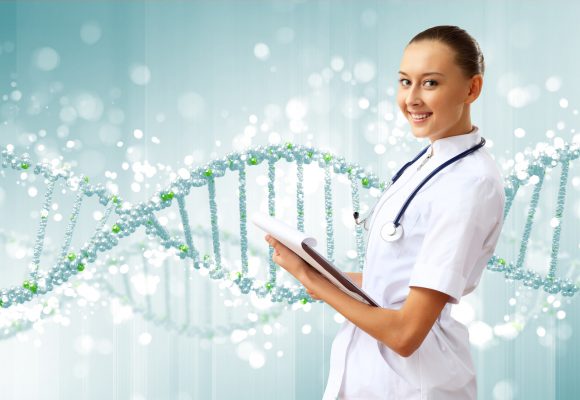Sarcoidosis Awareness: Did you know that April is designated “Sarcoidosis Awareness Month? This is not a well-known disease. And, it not a well-publicized awareness campaign. However, FLASS hopes to change. We want everyone to know about this condition.
On the one hand, you might not have heard of the disease unless someone in your family has been diagnosed. On the other hand, the disease is more common than you might think. So welcome to April, and to some special information about Sarcoidosis and Awareness of it.
So What is Sarcoidosis, and Why Do We Need Awareness?
According to Mayo Clinic, Sarcoidosis is “a disease characterized by the growth of tiny collections of inflammatory cells (granulomas) in any part of your body.”

Be Aware: Sarcoidosis can affect many different organs of the body at once!
FLASS wants you to know that this disease is most commonly discovered in the lungs and lymph nodes. Did you know that lungs are involved in 95% of cases of Sarcoidosis?
The Most Common Symptoms of Sarcoidosis
Apparently, lungs are the favorite abode of this disease. However, it also manifests in the eyes, skin, and heart, and it can take up residence in other areas of the body. Sarcoidosis is additionally well known for skin irruptions and joint pain. Below is an amazing list of the symptoms suffered by many Sarcoidosis patients:
Fever
Involuntary weight loss
A sense of overwhelming fatigue
Lung or Pulmonary Symptoms:
Shortness of breath
Wheezing
Persistent dry cough
Chest pain
Lumpy masses in the Lungs
Enlarged lymph glands in the chest
Symptoms On The Skin:
A rash of tender, red or reddish-purple bumps on your shins or ankles
Rash might be warm to the touch

Awareness Alert: The maze of symptoms sometimes obscures a Sarcoidosis diagnosis.
Growths under the skin (nodules), particularly around scars or tattoos
Distress caused by sores (lesions) on the nose, cheeks, and ears
Some areas of the skin appearing darker or lighter in color
Symptoms of the Eyes:
Sensitivity to light
Blurred vision
Pain in the eyes
Severe redness
Cardiac Symptoms:
Chest pain
Shortness of breath (dyspnea)
Fainting (syncope)
Fatigue
Irregular heartbeats (arrhythmias)
Rapid or fluttering heartbeat (palpitations)
Swelling caused by excess fluid (edema)
Don’t become overly alarmed or indulge in self-diagnosis. But if you are suffering any combination of these symptoms, please see your primary doctor or call the Florida Lung, Asthma and Sleep Specialist for an appointment.
What are the Causes of Sarcoidosis?
You will not like the answer to this question. Although doctors have been diagnosing this disease for 120 years, specialists still do not know exactly what causes it. Our up-to-date research at Medscape confirms, “The genetic predisposition may affect not only the occurrence of disease but also the clinical expression and course.
For Your Awareness: Updates on the Causes of Sarcoidosis
Thus the mysteries of Sarcoidosis will likely continue until deeply in the 21st century and perhaps beyond it. That does not mean that scientists are not working hard to define causes and find new treatments.

Sarcoidosis Awareness: Research shows a tendency for Sarcoidosis to run in families, but there’s no specific genetic evidence.
- Many experts think this disease results from the body’s immune system responding to an unknown substance. Thus, some research suggests infectious agents, dust and chemicals provoke it.
- To date, the precise nature of the environmental stimulus remains unknown. However, scientists have been investigating numerous leads and theories about the mysterious disease. Despite these efforts, the ability to identify a specific cause for this disease remains elusive.” For some deep reading and a new awareness of some of the research that is ongoing, please follow this illuminating Medscape link.
- Some scientists see the disease as a very abnormal reaction to the proteins present in the patient’s own body.
- Likewise, the patient’s body could produce self-proteins that are genetically predisposed to cause inflammatory responses.
The Strange Truths of Sarcoidosis
This is an incurable disease, but there are treatments available. Did you know that in some cases this disease goes away all on its own with very conservative treatment or no treatment at all?
However, the disease might leave organ damage in its wake and this damage might require a healthcare team to analyze and treat.As you might have guessed from the long list of symptoms above, Sarcoidosis poses difficulties in diagnosis because it produces so many signs and symptoms.
Although we have a special page on this website, for Sarcoidosis, let us note and summarize some specific truths here. These truths continue to be of vast importance to those who seek diagnosis or treatment for this disease.
As founder of FLASS and a FLASS healthcare provider, Dr. Fortune Alabi has stated, “Although we think of Sarcoidosis as lung disease, it can affect many parts of the body individually or simultaneously. Our specialists treat all the facets of this disease, not simply the pulmonary Sarcoidosis.”
How Do We Treat Sarcoidosis at FLASS?
Dr. Alabi is quick to explain “Other than in the lungs, we find and treat Sarcoidosis in lymph nodes, eyes, and skin. Sometimes it will even show up in the heart, the liver, and brain…” Thus, the experts at FLASS, with all their areas and sub-areas of specialty are uniquely qualified to manage difficult cases of this disease.
He stated, “At FLASS, we are cautious about unnecessary treatment. If there is no organ dysfunction, we design a Sarcoidosis Action Plan to help you manage your quality-of-life.”
He added, “For example, you might require treatment for symptoms of pain and fatigue. If your Sarcoidosis does not highly disturb your quality of life, we will use a conservative treatment approach. Of course, we will continue to monitor your condition.
FLASS and Your New Awareness of Chronic Sarcoidosis
Some of our patients endure an ongoing type of Sarcoidosis, called chronic Sarcoidosis. Chronic Sarcoidosis can create permanent damage to various parts of the body. Such patients require physicians, like the specialists at FLASS, who closely monitor damage to several body systems.
Dr. Alabi declares, “We customize treatment plans for all types of chronic Sarcoidosis. This is because one medicine that works for one Sarcoidosis patient may not work on another.”
FLASS and Chronic Pulmonary Sarcoidosis
In the lungs, chronic Sarcoidosis can become severe and even life-threatening.

With a FLASS Sarcoidosis Action Plan, we can treat your symptoms . Many Sarcoidosis patients lead normal, active lives.
Dr. Alabi explained, “Severe chronic Sarcoidosis might cause the granulomas to become fibrous.”
He continued, “This can lead to pulmonary fibrosis. Then, patients with chronic pulmonary Sarcoidosis have a higher risk of contracting bronchiectasis and emphysema.
Thus, severe chronic pulmonary Sarcoidosis patients might require portable oxygen or surgery.” At FLASS, specialists concentrate on limiting the damage of pulmonary Sarcoidosis and managing your symptoms.
The good news about Sarcoidosis is that it is not usually fatal. Plus, once it is in remission, only 5 percent of successfully treated patients ever relapse.
Thank you for reading the FLASS blog this week. Again, please use this link to: visit our website page dedicated exclusively to our Sarcoidosis specialty.
In our next blog–Part II of Sarcoidosis Awareness, we will bring you more information about the discoveries and treatments for this disease.

